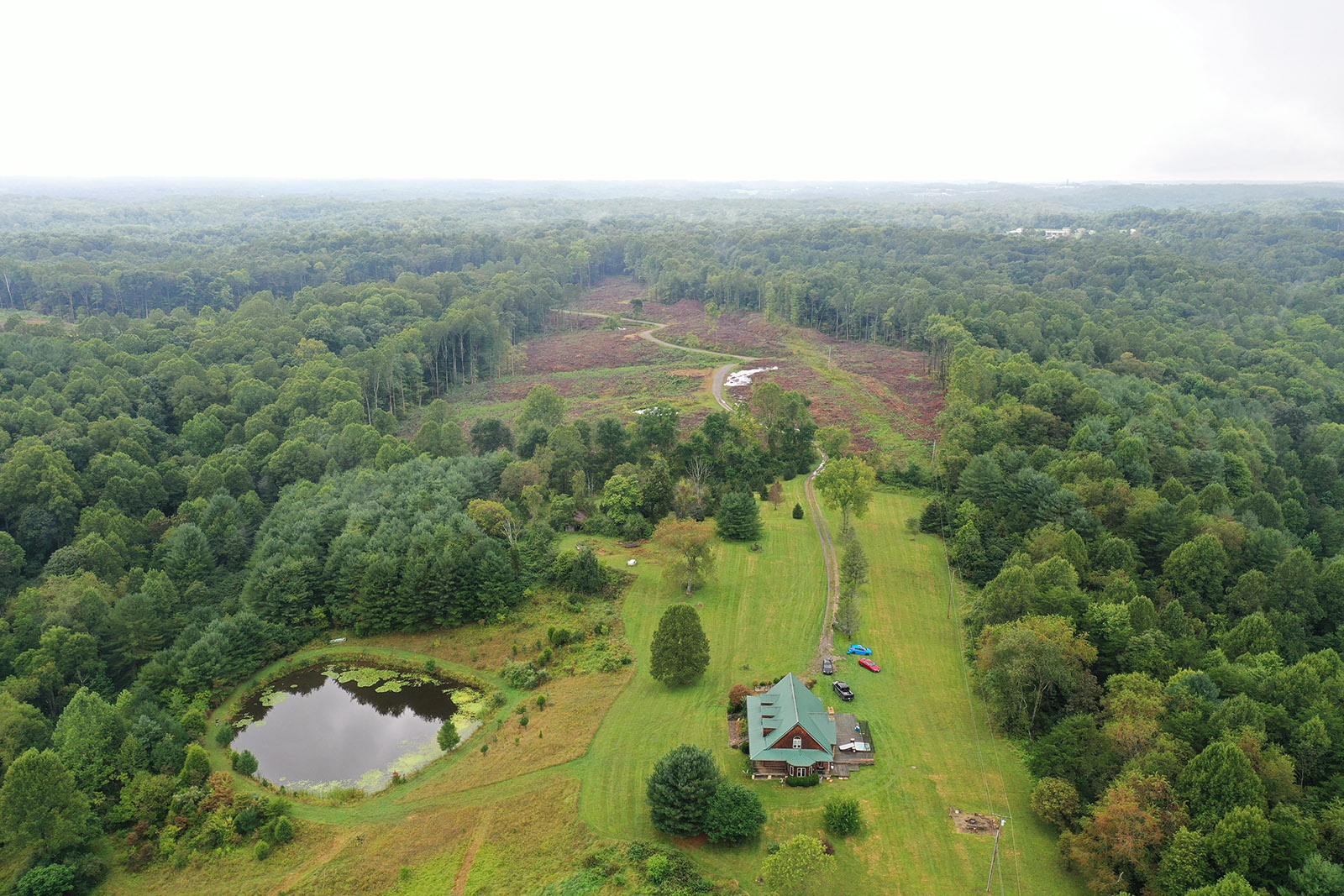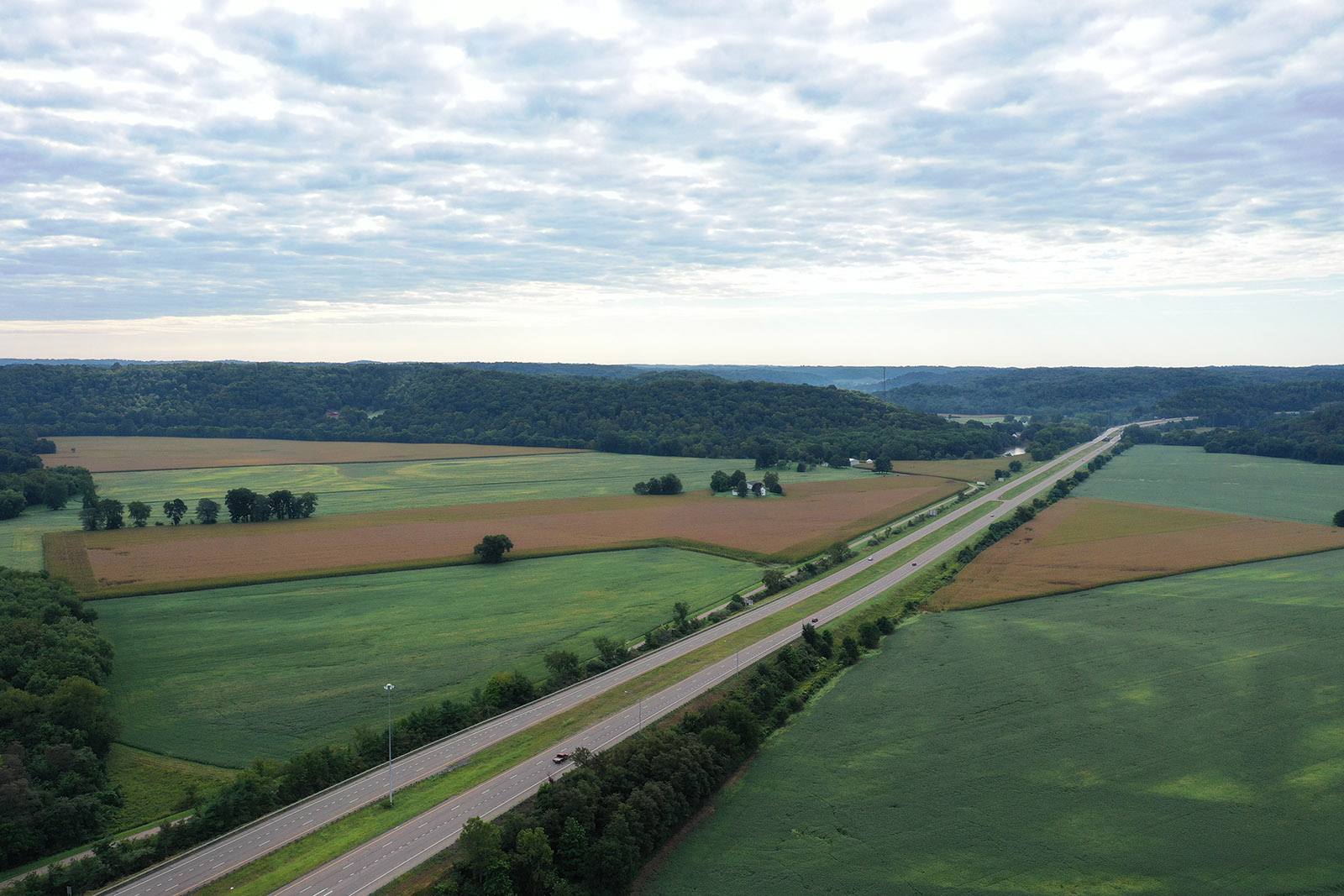You are using an out of date browser. It may not display this or other websites correctly.
You should upgrade or use an alternative browser.
You should upgrade or use an alternative browser.
Essential The Official Photography Thread
- Thread starter wutang512
- Start date
More options
Who Replied?just got all my gear
what you buy breh?
going to london uk in a week and a half


where's this breh?
AirBnB in Southern Ohio, friends bachelor party. Last 2 photos were in taken in Salem, Ohio on the way back to Cleveland. Folks down there got massive properties.
what you buy breh?




GH3, G7, Nocticron lens, and a rebel on loan from my homie.
finna start the sickest podcast toronto has ever seen.

Drove my winter beater all the way to montreal to get that lens yesterday....i had to
https://www.bestbuy.ca/en-ca/produc...cticron-42-5mm-f-1-2-ois-lens-hns043/10383998
saved $1200

all i need now is a zoom H6 recorder




GH3, G7, Nocticron lens, and a rebel on loan from my homie.
finna start the sickest podcast toronto has ever seen.
Drove my winter beater all the way to montreal to get that lens yesterday....i had to
https://www.bestbuy.ca/en-ca/produc...cticron-42-5mm-f-1-2-ois-lens-hns043/10383998
saved $1200
all i need now is a zoom H6 recorder
Boss
richtree
Top Shotta, None Hotta!
Canon's R3 shoots 6K 60p, and 4K 120p, 10-bit internal raw for $5999.99
All those R3 videos that released this morning


Got an email from B&H, I know Youtube is litAll those R3 videos that released this morning


I swear they have this same headline with every new phone release
iPhone 13 (Pro) is Here – Cinematic Mode and ProRes, the End of Video Cameras?
by Yaroslav Altunin2 days ago

The iPhone 13 is here. Apple has just announced the release of its new phone in four different variations. As with years before, the new iterations come with increased battery life and efficiency, as well as brighter and better displays. But this year brings some new additions that are positioned to shake up the camera market once again: iPhone 13 cinematic mode and ProRes recording.
This year could be a massacre for the camera industry as it looks like it might be time to throw out your entry-level or prosumer cameras.
When it was first released, the iPhone shook up the cellphone market. While some people hated the lack of a keyboard, almost a decade and a half later it has defined the market. When was the last time you saw a physical keyboard on your cellphone? With the introduction of prosumer grade video and photo options, Apple started to tackle the camera market. Point-and-shoot cameras no longer exist because of it. Directors and cinematographers started to choose the iPhone as a unique and cost-saving solution to shoot their films. But now, with the iPhone 13, the cinema camera market is the next target in Apple’s crosshairs. With the addition of Cinematic Mode and ProRes built right into the phone, Apple is positioned to not only disrupt but to give creatives a novel approach in how they create their stories in the visual medium.
iPhone 13 Cinematic Mode – computational depth-of-field for video
We recently published an article about rumors that Apple would introduce Portrait Mode for video. Today, this has come to fruition. Cinematic Mode builds on the same concept, but at multiple frames per second. The new A15 Bionic chip that comes with every model of the iPhone 13, uses its processing power and multi-frame image processing pipeline to create a depth of field effect. Check it out in the video below.
This new iPhone 13 Cinematic Mode can be used automatically, which shifts the fake depth of field effect to focus on a subject’s face. If your subject looks away, the computational power of the A15 reframes the focus onto something else in the frame. A manual option is also available, allowing users to shift the focus as they see fit. It can also be locked onto a subject and track it, much like the face-tracking features from Canon and Sony.
Change the focus point and level of bokeh after shooting!
What’s especially amazing about the iPhone 13 Cinematic mode is that each clip is saved with a depth map, so the focus can be changed in post within a video clip, including the level of bokeh applied (like it has been already possible with Portrait mode for photos).
We can’t wait to see what this feature is capable of, we surely will see filmmakers use this professionally very soon. Apple featured director Kathryn Bigelow and DP Greig Fraser, ACS, ASC in their introductory video and they showed off some impressive scenes shot on the new iPhones.
Skip to 01:08:00 to learn about the video features of the new iPhone 13 and iPhone 13 Pro:
ProRes in iPhone 13 Pro and Pro Max
While not available right out of the box, ProRes is also coming to iPhone. But later this year. ProRes alone would be a game-changer, but in combination with Cinematic Mode, Apple has created a device that is set to rival prosumer-grade cinema cameras. This advanced video codec is widely used as the final delivery format for commercials, feature films, and broadcasts. It offers higher color fidelity and less compression than the current H.264 and HEVC formats.

Cinematic Mode and ProRes, a match made in heaven. Image Credit: Apple
Both the iPhone 13 Pro and iPhone 13 Pro Max support ProRes video recording in the Camera app at 1080p 30 fps with the 128GB storage option and up to 4K 30 fps with 256GB, 512GB, and 1TB storage options.
The new A15 chip uses advanced video encoders and decoders, along with its flash storage pipeline, to handle this workload. Users can capture, edit, and share their projects right from their devices. What was once available only for cinema-grade cameras, is now an option on your smartphone. Is this even a phone anymore? Whatever it is, it’s the first device to offering an end-to-end professional workflow.
A little bit more
The lenses on the new phone have also gotten special treatment. The Pro lineup comes with three new lenses, equivalent to 77mm at f/2.8, 26mm at f/1.5, and 13mm at f/1.3. The last one offers a whopping 120° field of view. Not only that, the new ultra-wide lens offers new options for macro photography. That also means that the telephoto lens now offers a 3x magnification instead of the 2x as before.

The all-new wide camera on the iPhone 13. Image Credit: Apple
The displays on the Pro phones come in at 2532‑by‑1170-pixel resolution at 460 ppi and 2778‑by‑1284-pixel resolution at 458 ppi for the Pro and Pro Max, respectively. Not only that, they still offer P3 color and 2,000,000:1 contrast ratio, as well as 1000 nits max brightness, with 1200 nits max brightness in HDR. What makes these displays better, is the variable refresh rate from 10hz to 120hz. All made possible by the new A15 chip that has a new 6‑core CPU with 2 performance and 4 efficiency cores, and a 5-core in the Pro lineup.
So, Do You Need It?
With all these new additions and upgrades (and of course this one also features Dolby Vision HDR like iPhone 12), Apple has made a unique device set to disrupt the camera market once again. But, this is new tech and while the demo during the keynote was incredible to see, it still needs to go through testing to see if it’ll match up with the big boys and girls – and we will do our best to put it through its paces soon.
While the new iPhone won’t be replacing RED and ARRI cameras in productions any time soon, it is becoming clear that cameras will never be the same. Creators can now film an entire movie on their phone that can look and feel like a blockbuster feature, all while taking calls from their grandma during Christmas. Who knows, maybe it’ll even pop on Netflix’s list of approved cameras?
What do you think of this new iPhone? Is this the game-changer Apple thinks it is? Let us know in the comments!
iPhone 13 (Pro) is Here – Cinematic Mode and ProRes, the End of Video Cameras?
by Yaroslav Altunin2 days ago

The iPhone 13 is here. Apple has just announced the release of its new phone in four different variations. As with years before, the new iterations come with increased battery life and efficiency, as well as brighter and better displays. But this year brings some new additions that are positioned to shake up the camera market once again: iPhone 13 cinematic mode and ProRes recording.
This year could be a massacre for the camera industry as it looks like it might be time to throw out your entry-level or prosumer cameras.
When it was first released, the iPhone shook up the cellphone market. While some people hated the lack of a keyboard, almost a decade and a half later it has defined the market. When was the last time you saw a physical keyboard on your cellphone? With the introduction of prosumer grade video and photo options, Apple started to tackle the camera market. Point-and-shoot cameras no longer exist because of it. Directors and cinematographers started to choose the iPhone as a unique and cost-saving solution to shoot their films. But now, with the iPhone 13, the cinema camera market is the next target in Apple’s crosshairs. With the addition of Cinematic Mode and ProRes built right into the phone, Apple is positioned to not only disrupt but to give creatives a novel approach in how they create their stories in the visual medium.
iPhone 13 Cinematic Mode – computational depth-of-field for video
We recently published an article about rumors that Apple would introduce Portrait Mode for video. Today, this has come to fruition. Cinematic Mode builds on the same concept, but at multiple frames per second. The new A15 Bionic chip that comes with every model of the iPhone 13, uses its processing power and multi-frame image processing pipeline to create a depth of field effect. Check it out in the video below.
This new iPhone 13 Cinematic Mode can be used automatically, which shifts the fake depth of field effect to focus on a subject’s face. If your subject looks away, the computational power of the A15 reframes the focus onto something else in the frame. A manual option is also available, allowing users to shift the focus as they see fit. It can also be locked onto a subject and track it, much like the face-tracking features from Canon and Sony.
Change the focus point and level of bokeh after shooting!
What’s especially amazing about the iPhone 13 Cinematic mode is that each clip is saved with a depth map, so the focus can be changed in post within a video clip, including the level of bokeh applied (like it has been already possible with Portrait mode for photos).
We can’t wait to see what this feature is capable of, we surely will see filmmakers use this professionally very soon. Apple featured director Kathryn Bigelow and DP Greig Fraser, ACS, ASC in their introductory video and they showed off some impressive scenes shot on the new iPhones.
Skip to 01:08:00 to learn about the video features of the new iPhone 13 and iPhone 13 Pro:
ProRes in iPhone 13 Pro and Pro Max
While not available right out of the box, ProRes is also coming to iPhone. But later this year. ProRes alone would be a game-changer, but in combination with Cinematic Mode, Apple has created a device that is set to rival prosumer-grade cinema cameras. This advanced video codec is widely used as the final delivery format for commercials, feature films, and broadcasts. It offers higher color fidelity and less compression than the current H.264 and HEVC formats.

Cinematic Mode and ProRes, a match made in heaven. Image Credit: Apple
Both the iPhone 13 Pro and iPhone 13 Pro Max support ProRes video recording in the Camera app at 1080p 30 fps with the 128GB storage option and up to 4K 30 fps with 256GB, 512GB, and 1TB storage options.
The new A15 chip uses advanced video encoders and decoders, along with its flash storage pipeline, to handle this workload. Users can capture, edit, and share their projects right from their devices. What was once available only for cinema-grade cameras, is now an option on your smartphone. Is this even a phone anymore? Whatever it is, it’s the first device to offering an end-to-end professional workflow.
A little bit more
The lenses on the new phone have also gotten special treatment. The Pro lineup comes with three new lenses, equivalent to 77mm at f/2.8, 26mm at f/1.5, and 13mm at f/1.3. The last one offers a whopping 120° field of view. Not only that, the new ultra-wide lens offers new options for macro photography. That also means that the telephoto lens now offers a 3x magnification instead of the 2x as before.

The all-new wide camera on the iPhone 13. Image Credit: Apple
The displays on the Pro phones come in at 2532‑by‑1170-pixel resolution at 460 ppi and 2778‑by‑1284-pixel resolution at 458 ppi for the Pro and Pro Max, respectively. Not only that, they still offer P3 color and 2,000,000:1 contrast ratio, as well as 1000 nits max brightness, with 1200 nits max brightness in HDR. What makes these displays better, is the variable refresh rate from 10hz to 120hz. All made possible by the new A15 chip that has a new 6‑core CPU with 2 performance and 4 efficiency cores, and a 5-core in the Pro lineup.
So, Do You Need It?
With all these new additions and upgrades (and of course this one also features Dolby Vision HDR like iPhone 12), Apple has made a unique device set to disrupt the camera market once again. But, this is new tech and while the demo during the keynote was incredible to see, it still needs to go through testing to see if it’ll match up with the big boys and girls – and we will do our best to put it through its paces soon.
While the new iPhone won’t be replacing RED and ARRI cameras in productions any time soon, it is becoming clear that cameras will never be the same. Creators can now film an entire movie on their phone that can look and feel like a blockbuster feature, all while taking calls from their grandma during Christmas. Who knows, maybe it’ll even pop on Netflix’s list of approved cameras?
What do you think of this new iPhone? Is this the game-changer Apple thinks it is? Let us know in the comments!
richtree
Top Shotta, None Hotta!
I swear they have this same headline with every new phone release
iPhone 13 (Pro) is Here – Cinematic Mode and ProRes, the End of Video Cameras?
by Yaroslav Altunin2 days ago

The iPhone 13 is here. Apple has just announced the release of its new phone in four different variations. As with years before, the new iterations come with increased battery life and efficiency, as well as brighter and better displays. But this year brings some new additions that are positioned to shake up the camera market once again: iPhone 13 cinematic mode and ProRes recording.
This year could be a massacre for the camera industry as it looks like it might be time to throw out your entry-level or prosumer cameras.
When it was first released, the iPhone shook up the cellphone market. While some people hated the lack of a keyboard, almost a decade and a half later it has defined the market. When was the last time you saw a physical keyboard on your cellphone? With the introduction of prosumer grade video and photo options, Apple started to tackle the camera market. Point-and-shoot cameras no longer exist because of it. Directors and cinematographers started to choose the iPhone as a unique and cost-saving solution to shoot their films. But now, with the iPhone 13, the cinema camera market is the next target in Apple’s crosshairs. With the addition of Cinematic Mode and ProRes built right into the phone, Apple is positioned to not only disrupt but to give creatives a novel approach in how they create their stories in the visual medium.
iPhone 13 Cinematic Mode – computational depth-of-field for video
We recently published an article about rumors that Apple would introduce Portrait Mode for video. Today, this has come to fruition. Cinematic Mode builds on the same concept, but at multiple frames per second. The new A15 Bionic chip that comes with every model of the iPhone 13, uses its processing power and multi-frame image processing pipeline to create a depth of field effect. Check it out in the video below.
This new iPhone 13 Cinematic Mode can be used automatically, which shifts the fake depth of field effect to focus on a subject’s face. If your subject looks away, the computational power of the A15 reframes the focus onto something else in the frame. A manual option is also available, allowing users to shift the focus as they see fit. It can also be locked onto a subject and track it, much like the face-tracking features from Canon and Sony.
Change the focus point and level of bokeh after shooting!
What’s especially amazing about the iPhone 13 Cinematic mode is that each clip is saved with a depth map, so the focus can be changed in post within a video clip, including the level of bokeh applied (like it has been already possible with Portrait mode for photos).
We can’t wait to see what this feature is capable of, we surely will see filmmakers use this professionally very soon. Apple featured director Kathryn Bigelow and DP Greig Fraser, ACS, ASC in their introductory video and they showed off some impressive scenes shot on the new iPhones.
Skip to 01:08:00 to learn about the video features of the new iPhone 13 and iPhone 13 Pro:
ProRes in iPhone 13 Pro and Pro Max
While not available right out of the box, ProRes is also coming to iPhone. But later this year. ProRes alone would be a game-changer, but in combination with Cinematic Mode, Apple has created a device that is set to rival prosumer-grade cinema cameras. This advanced video codec is widely used as the final delivery format for commercials, feature films, and broadcasts. It offers higher color fidelity and less compression than the current H.264 and HEVC formats.

Cinematic Mode and ProRes, a match made in heaven. Image Credit: Apple
Both the iPhone 13 Pro and iPhone 13 Pro Max support ProRes video recording in the Camera app at 1080p 30 fps with the 128GB storage option and up to 4K 30 fps with 256GB, 512GB, and 1TB storage options.
The new A15 chip uses advanced video encoders and decoders, along with its flash storage pipeline, to handle this workload. Users can capture, edit, and share their projects right from their devices. What was once available only for cinema-grade cameras, is now an option on your smartphone. Is this even a phone anymore? Whatever it is, it’s the first device to offering an end-to-end professional workflow.
A little bit more
The lenses on the new phone have also gotten special treatment. The Pro lineup comes with three new lenses, equivalent to 77mm at f/2.8, 26mm at f/1.5, and 13mm at f/1.3. The last one offers a whopping 120° field of view. Not only that, the new ultra-wide lens offers new options for macro photography. That also means that the telephoto lens now offers a 3x magnification instead of the 2x as before.

The all-new wide camera on the iPhone 13. Image Credit: Apple
The displays on the Pro phones come in at 2532‑by‑1170-pixel resolution at 460 ppi and 2778‑by‑1284-pixel resolution at 458 ppi for the Pro and Pro Max, respectively. Not only that, they still offer P3 color and 2,000,000:1 contrast ratio, as well as 1000 nits max brightness, with 1200 nits max brightness in HDR. What makes these displays better, is the variable refresh rate from 10hz to 120hz. All made possible by the new A15 chip that has a new 6‑core CPU with 2 performance and 4 efficiency cores, and a 5-core in the Pro lineup.
So, Do You Need It?
With all these new additions and upgrades (and of course this one also features Dolby Vision HDR like iPhone 12), Apple has made a unique device set to disrupt the camera market once again. But, this is new tech and while the demo during the keynote was incredible to see, it still needs to go through testing to see if it’ll match up with the big boys and girls – and we will do our best to put it through its paces soon.
While the new iPhone won’t be replacing RED and ARRI cameras in productions any time soon, it is becoming clear that cameras will never be the same. Creators can now film an entire movie on their phone that can look and feel like a blockbuster feature, all while taking calls from their grandma during Christmas. Who knows, maybe it’ll even pop on Netflix’s list of approved cameras?
What do you think of this new iPhone? Is this the game-changer Apple thinks it is? Let us know in the comments!
I think every device has its place andsome people will find that iphone useful..I think it would be great for capturing BTS during an actual shoot.
Canadian price tag on those phones is crazy, the 1tb pro max is like the price of my Sony Camera ..
muhfukkas really asked "the end of video cameras" for an iphone. 

Canon's R3 shoots 6K 60p, and 4K 120p, 10-bit internal raw for $5999.99

That’s like 8k cdn
wish I could afford to spend that on a camera
I swear they have this same headline with every new phone release
iPhone 13 (Pro) is Here – Cinematic Mode and ProRes, the End of Video Cameras?
by Yaroslav Altunin2 days ago

The iPhone 13 is here. Apple has just announced the release of its new phone in four different variations. As with years before, the new iterations come with increased battery life and efficiency, as well as brighter and better displays. But this year brings some new additions that are positioned to shake up the camera market once again: iPhone 13 cinematic mode and ProRes recording.
This year could be a massacre for the camera industry as it looks like it might be time to throw out your entry-level or prosumer cameras.
When it was first released, the iPhone shook up the cellphone market. While some people hated the lack of a keyboard, almost a decade and a half later it has defined the market. When was the last time you saw a physical keyboard on your cellphone? With the introduction of prosumer grade video and photo options, Apple started to tackle the camera market. Point-and-shoot cameras no longer exist because of it. Directors and cinematographers started to choose the iPhone as a unique and cost-saving solution to shoot their films. But now, with the iPhone 13, the cinema camera market is the next target in Apple’s crosshairs. With the addition of Cinematic Mode and ProRes built right into the phone, Apple is positioned to not only disrupt but to give creatives a novel approach in how they create their stories in the visual medium.
iPhone 13 Cinematic Mode – computational depth-of-field for video
We recently published an article about rumors that Apple would introduce Portrait Mode for video. Today, this has come to fruition. Cinematic Mode builds on the same concept, but at multiple frames per second. The new A15 Bionic chip that comes with every model of the iPhone 13, uses its processing power and multi-frame image processing pipeline to create a depth of field effect. Check it out in the video below.
This new iPhone 13 Cinematic Mode can be used automatically, which shifts the fake depth of field effect to focus on a subject’s face. If your subject looks away, the computational power of the A15 reframes the focus onto something else in the frame. A manual option is also available, allowing users to shift the focus as they see fit. It can also be locked onto a subject and track it, much like the face-tracking features from Canon and Sony.
Change the focus point and level of bokeh after shooting!
What’s especially amazing about the iPhone 13 Cinematic mode is that each clip is saved with a depth map, so the focus can be changed in post within a video clip, including the level of bokeh applied (like it has been already possible with Portrait mode for photos).
We can’t wait to see what this feature is capable of, we surely will see filmmakers use this professionally very soon. Apple featured director Kathryn Bigelow and DP Greig Fraser, ACS, ASC in their introductory video and they showed off some impressive scenes shot on the new iPhones.
Skip to 01:08:00 to learn about the video features of the new iPhone 13 and iPhone 13 Pro:
ProRes in iPhone 13 Pro and Pro Max
While not available right out of the box, ProRes is also coming to iPhone. But later this year. ProRes alone would be a game-changer, but in combination with Cinematic Mode, Apple has created a device that is set to rival prosumer-grade cinema cameras. This advanced video codec is widely used as the final delivery format for commercials, feature films, and broadcasts. It offers higher color fidelity and less compression than the current H.264 and HEVC formats.

Cinematic Mode and ProRes, a match made in heaven. Image Credit: Apple
Both the iPhone 13 Pro and iPhone 13 Pro Max support ProRes video recording in the Camera app at 1080p 30 fps with the 128GB storage option and up to 4K 30 fps with 256GB, 512GB, and 1TB storage options.
The new A15 chip uses advanced video encoders and decoders, along with its flash storage pipeline, to handle this workload. Users can capture, edit, and share their projects right from their devices. What was once available only for cinema-grade cameras, is now an option on your smartphone. Is this even a phone anymore? Whatever it is, it’s the first device to offering an end-to-end professional workflow.
A little bit more
The lenses on the new phone have also gotten special treatment. The Pro lineup comes with three new lenses, equivalent to 77mm at f/2.8, 26mm at f/1.5, and 13mm at f/1.3. The last one offers a whopping 120° field of view. Not only that, the new ultra-wide lens offers new options for macro photography. That also means that the telephoto lens now offers a 3x magnification instead of the 2x as before.

The all-new wide camera on the iPhone 13. Image Credit: Apple
The displays on the Pro phones come in at 2532‑by‑1170-pixel resolution at 460 ppi and 2778‑by‑1284-pixel resolution at 458 ppi for the Pro and Pro Max, respectively. Not only that, they still offer P3 color and 2,000,000:1 contrast ratio, as well as 1000 nits max brightness, with 1200 nits max brightness in HDR. What makes these displays better, is the variable refresh rate from 10hz to 120hz. All made possible by the new A15 chip that has a new 6‑core CPU with 2 performance and 4 efficiency cores, and a 5-core in the Pro lineup.
So, Do You Need It?
With all these new additions and upgrades (and of course this one also features Dolby Vision HDR like iPhone 12), Apple has made a unique device set to disrupt the camera market once again. But, this is new tech and while the demo during the keynote was incredible to see, it still needs to go through testing to see if it’ll match up with the big boys and girls – and we will do our best to put it through its paces soon.
While the new iPhone won’t be replacing RED and ARRI cameras in productions any time soon, it is becoming clear that cameras will never be the same. Creators can now film an entire movie on their phone that can look and feel like a blockbuster feature, all while taking calls from their grandma during Christmas. Who knows, maybe it’ll even pop on Netflix’s list of approved cameras?
What do you think of this new iPhone? Is this the game-changer Apple thinks it is? Let us know in the comments!
There isn’t a need for the average person to have a point and shoot camera like back in the day thanks to the quality of these phones
but yeah that’s about it
I never use my iPhone for photos






